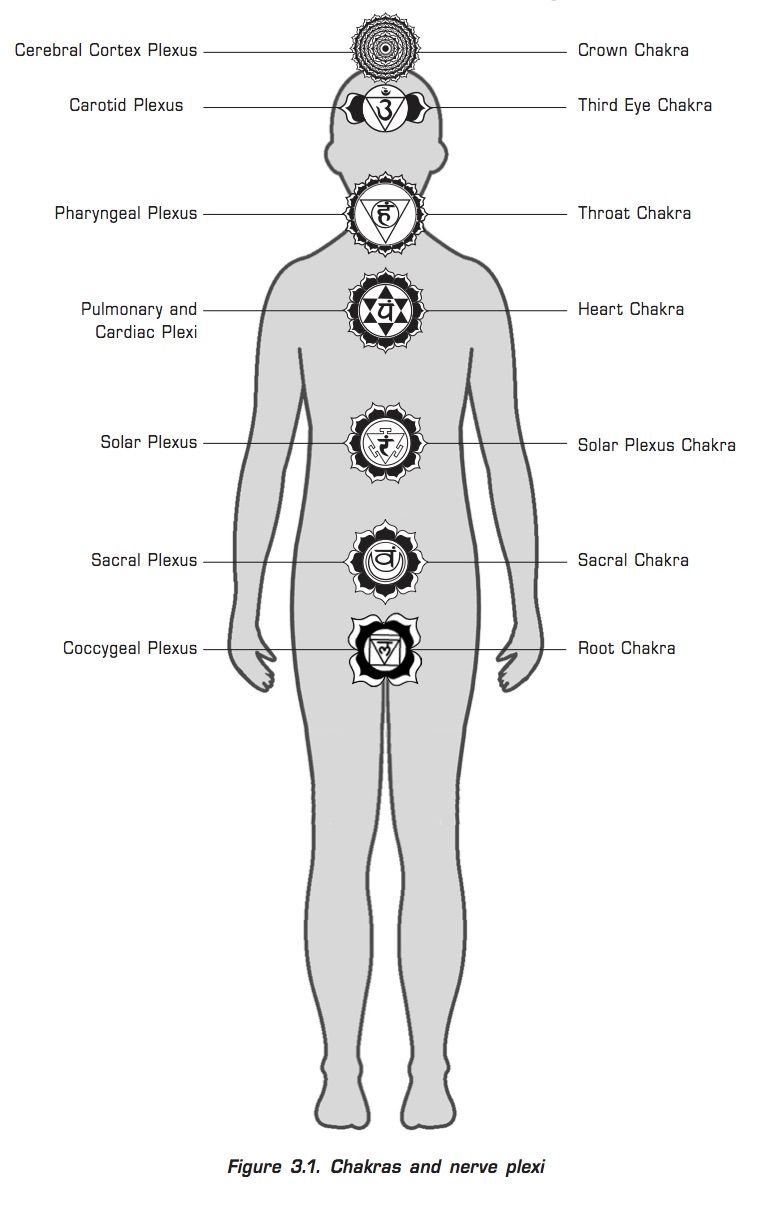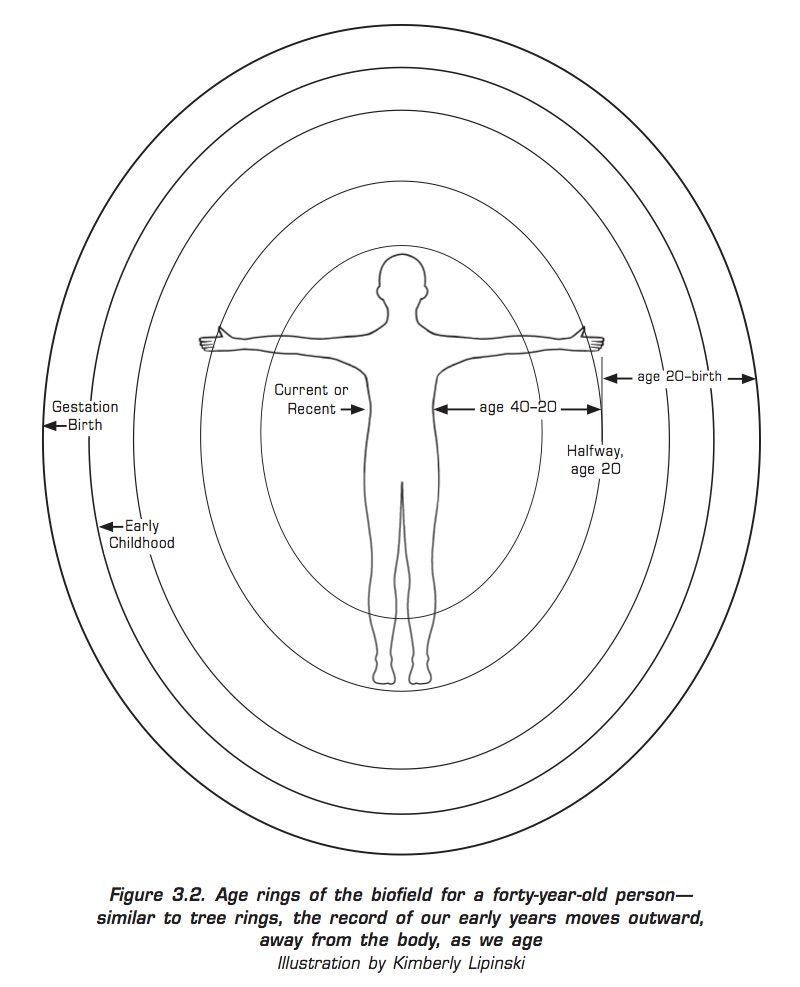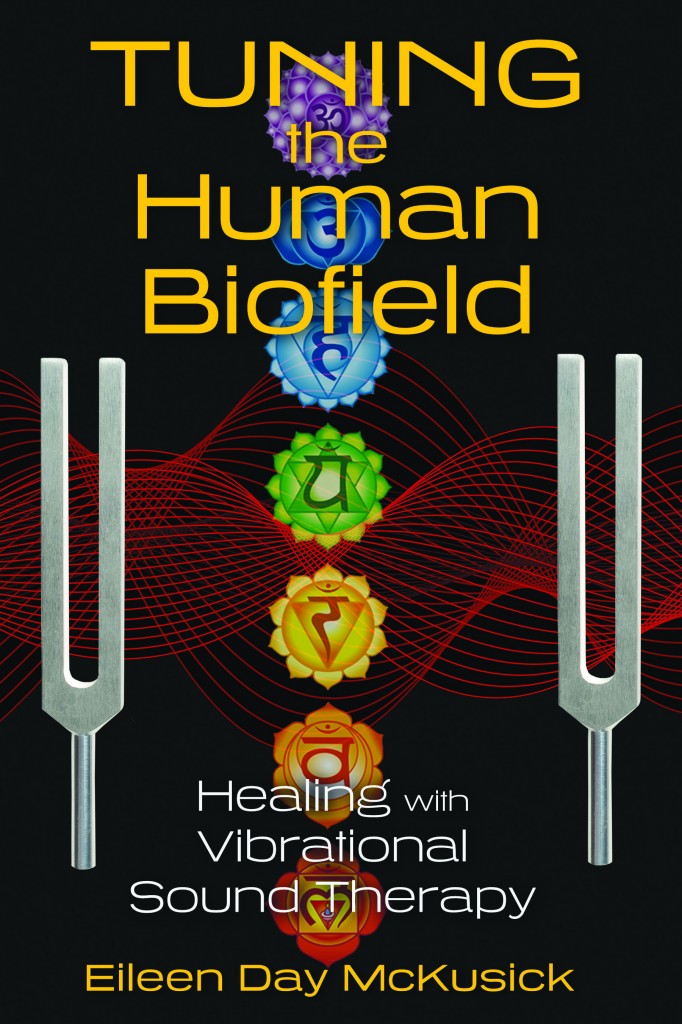by Eileen McKusick: The following is excerpted from Tuning the Human Biofield: Healing with Vibrational Sound Therapy, published by Inner Traditions.
How Sound Balancing Came to Be
I am a researcher by nature, and when I become interested in a particular subject, I tend to read everything I can find on it. In 1996 someone gave me a book on the use of color and sound in healing. This was shortly after I had come across quantum physics and the notion that everything is vibration. It appeared to me at once that if everything is vibration, then treating vibration with vibration is logical and elegant, and so I proceeded to read everything I could find on this subject. As I was getting to the end of my stack, I received a catalog in the mail advertising a set of “tuning forks for healing,” which I ordered on impulse. The tuning forks were called the Solar Harmonic Spectrum set: eight forks in the octave of the C major scale. They came with very simple directions: use the note of C over the root chakra, the note of D over the sacral chakra, and so on, up to the note of B at the crown chakra. According to the Vedic and other ancient traditions, there are seven major energy centers, or chakras, that run along the spine; these are considered part of the body’s subtle anatomy.
I began experimenting with the tuning forks with a few of my massage therapy clients. I activated the forks by striking them against a hockey puck and then held them over the body as instructed. I immediately noticed that the quality of the sound—the volume, pitch, and timbre—changed, depending on where the tuning fork was held. This was very surprising to me, as I expected the fork to produce a steady, regular tone. A single strike could produce tones that were flat, sharp, dull, loud, soft, or full of static as I moved the fork around the body.
Furthermore, I found that if a client was complaining of pain in a particular area, the fork would produce either a loud, sharp tone or a tone full of static and “noise.” After holding the fork over the area, perhaps six inches or so over the body, I found that after a few moments the tone would become clear. Again, much to my surprise, the client would return the following week and tell me that all her pain was gone after the session. People also reported to me that they felt more calm, clear, and “lighter” after sessions.
Another curious phenomenon that I observed was that I could actually “drag around” the spots that were more energized, which I assumed was the case in areas where the tone became louder. For example, if I passed the tuning fork over a person’s hip and the tone became louder there, I could do what felt like “hooking in” to the energized area, and pull it along with the fork. It made sense to me that it should sound loud down the center of the body, along the spine, at the areas where the chakras and the nerve plexi are located.
I developed a technique that I called “click, drag, and drop,” which is essentially a “combing” of what I can only describe as energy from the periphery of the body to the vertical midline. The process felt akin to using a magnet to move iron filings across a surface. I noticed a definite increase in the volume of the fork in the area over each chakra after I completed this dragging process.
The word chakra means “wheel,” and these energy centers are considered spinning wheels or vortexes of subtle energy flow. As one can see in figure 3.1, these centers sit approximately in the same places as our nerve plexi (think of subtle energy as a higher harmonic of the electricity present in a nerve cluster).
I don’t really like using the word chakra because it is one of those words that for many people has the charge of the unknown. In my effort to bridge the domains of science and spirituality, I try, whenever possible, to choose words or phrases that are more familiar. There is no English equivalent of the word chakra, however, because the concept of this feature of our energy anatomy does not exist in English.
Clients began requesting that I use sound more and more, and within a few months I found myself doing more sound sessions than straight massage sessions. Since I was in brand-new territory, with no real road map other than the simple instructions the forks came with, I had to trust my senses and my intuitive guidance as I moved forward with the process.
The Mail Slot
The mail slot is the metaphor I use for describing intuitive guidance. I came across this concept once in a book, the title of which I cannot remember, wherein the author was discussing his experience of the intuitive process. He described it as a mail slot in the back of his head that would randomly open and a note would drop in. He found that if the note contained instructions to do something, for example, and he did it, he would observe a beneficial outcome. As a result, he had learned to trust and follow whatever came in through the mail slot.
I think this is a great way to describe what we call inner guidance, or the inner teacher, and as someone who has been self-taught in the use of tuning forks, I would say that this has been my experience as well. I become uncomfortable when people talk about things like guides, whether angelic, animal, or otherwise, because from my perspective we really can’t know what is behind this information drop. And I for one am content with this mystery.
I bring up the mail slot here because it was really this process that informed so much of how this work developed. Perhaps it is because of the way I was raised. After having five kids, with me being the youngest, my parents had figured out a few things and gave me a lot of room to “do what you feel like doing.” Consequently, I’ve always been very attuned to my inner awareness. I also traveled extensively by myself between the ages of seventeen and twenty and had to rely completely on my own awareness and intuition to navigate this process. Because of all this, I don’t suffer the fear, doubt, and uncertainty that many people experience when it comes to hearing and trusting their inner guidance.
Discovering the Energy Field around the Body
I continued using the simple click, drag, and drop method on the seven major chakras on the front of the body until one day I got the idea to flip a person over and go down the back. I was surprised to discover a completely different terrain in the back and began to incorporate that into each session.
My biggest breakthrough with the work, however, occurred one day in 2005, quite by accident. I was approaching the table with the tuning fork activated (usually I activated the fork right next to the body), when about two and a half feet to the side of the client’s throat the tone of the fork flared up and became quite loud and sharp. I investigated the area and discovered a “pocket” about four inches wide that, when the fork passed through it, the volume went up. When the fork passed out of it, the volume went back down. Intrigued, I employed the click, drag, and drop technique, tugging the pocket back to the throat chakra, where it felt as though it was literally sucked into the body. This particular client had been complaining of jaw, neck, and shoulder pain on that side. When I had initially investigated the area I was surprised to find no noise over it, and was puzzling over this observation when I discovered that the noise was in fact out in what I had surmised, based on what I had read in esoteric literature up to that point, was the client’s energy field.
This person had gone to many different kinds of practitioners, including an osteopath, an acupuncturist, a chiropractor, and a massage therapist, and had found no relief from this uncomfortable condition. She called me the day after the session to tell me that, much to her surprise (and mine), the pain was completely gone. And it stayed gone after that, returning only briefly and occasionally when she was under stress.
After this, I began to explore the area around the body. I went as far off to the side as space allowed—about six feet—and from there combed my way in on the plane of the treatment table toward the body. I began to find phenomena I perceived as “pockets” and “walls” and “fields” and different kinds of vibrational information expressed through the overtones on every person I worked on, in various positions all around the body. I found that I seemed to have the ability to translate the feedback, or “hear the story,” that the forks were sending. (This ability to hear more than the average person is called clairaudience, as contrasted with clairvoyance, which describes the phenomenon of seeing more, as in the case of seeing colors in people’s energy fields.) In certain areas the tone would sound or feel sad, or angry, or fearful, or any number of different emotions. Much like how a minor third in music is a universal expression of sadness, the interface between what seemed to me to be a pattern of information stored in the field and the sound of the tuning forks evoked a sense of emotion, just as music does. And much to my surprise (this work has surprised and continues to surprise me regularly), I began to find that the same emotions seem to reside in the same places in each person.
For example, I kept observing, or more precisely, hearing, the emotion of sadness in the area off the left shoulder, the emotions of guilt or shame in the area off the right hip, a sense of worry off the left side of the head, and so on throughout the body. It took a few years, but, like putting together a puzzle, the entire picture of what I now call the biofield anatomy emerged. I’ll go into detail about the biofield anatomy in chapter 7.
Very often when I found a pocket of energy and information, I could “hear,” via the mail slot, not only what the emotion involved was, but also the age at which it was first generated. I noticed that information generated currently or in the recent past was closer to the body, while information from earliest childhood, including even gestation and birth, was at the outer edge of the field, which is about five feet out on most people, with the rest of the life history falling in between, like tree rings. These observations were inconsistent with the traditional esoteric literature, where I found nothing like a description of this timeline phenomenon, or compartmentalization of specific emotions in specific places off to the sides of the chakras. While much of what I found was in line with Carolyn Myss’s description of the emotions that residein each chakra, found in her book Anatomy of the Spirit, I had otherwise found no other references to this particular phenomenon, despite having read extensively on the subject. This being the case, I proceeded tentatively with the notion that what I was observing was an objective phenomenon. Only after seeing the patterns repeat over and over again, in many hundreds of people, and now having my students observe the same phenomenon, do I now feel more confident that this structure of information storage may in fact exist within the body’s energy field, at least on the level of the energy field that interfaces with the audible frequencies produced by the forks.
That said, I want to point out that the possibility also exists that this may be a construct of my imagination. A client of mine who is a dowser and teaches dowsing told me a story about how in one of his classes he had constructed an Earth energy line with his mind in a particular place in the field behind his house. He instructed his students that this line was present there somewhere, but did not tell them that he had constructed it with his imagination. Subsequently they all went back there and found it with their dowsing rods. He then deconstructed it with his mind, after which none of his students could find it anymore. The mind is very powerful and capable of things far beyond what we have been taught. This example provides evidence that this entire structure that I call the biofield anatomy may exist only as a construct that seems to appear when I am working on people, and is not, in fact, really there.
A small experiment I conducted points to this possibility. I was demonstrating the technique to a physics professor who suggested I try holding the fork with a clamp instead of my hand to see what happened. I was stunned to find that the volume change that I had come to rely on as an indication that I was encountering “energy” or “charge” did not occur when I was not touching the fork with my hands. I could hear the changes in the overtones, but the volume produced by the fork remained consistent as it passed through the field. This shows me that my energy is clearly influencing the process, as using the clamp interrupts the circuit of energy exchange. So when it comes right down to it, I don’t really understand what is happening, and it is because of this not knowing that I wish to continue my research, making use of sensitive recording equipment and possibly a mechanical arm and self-striking tuning fork. Although as my students have pointed out, regardless of whether the biofield is truly and objectively there or not, the method and structure can be taught, replicated, and produces beneficial outcomes, regardless.












































